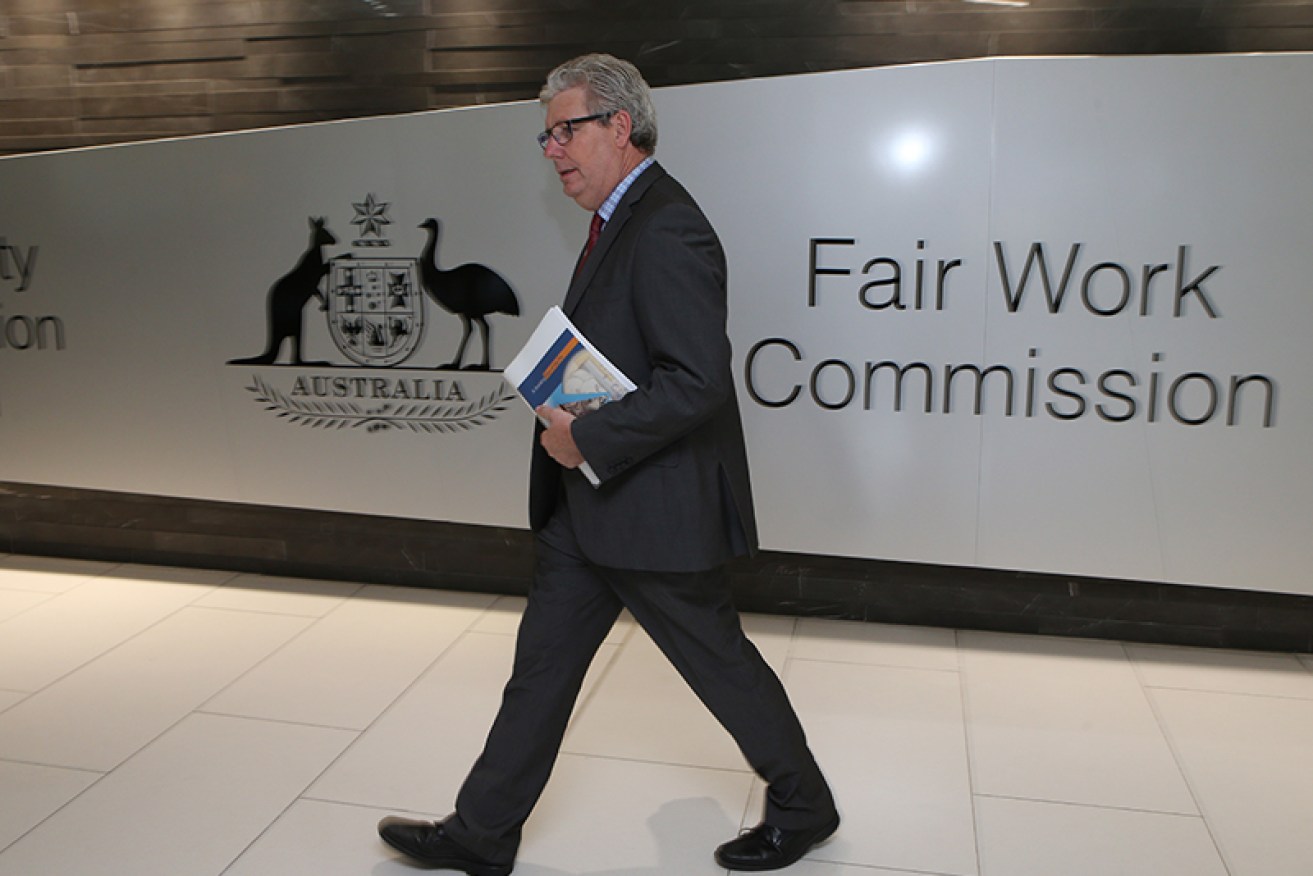Minimum wage joke falls flat before bad economic report card


The Fair Work Commission has made a provisional ruling. Photo: AAP
“We are satisfied that the level of increase we have decided upon will not lead to any adverse inflationary outcome,” said Fair Work Commission president Justice Iain Ross when delivering last week’s minimum wage decision.
It would be nice to think he was trying to be funny.
The 3 per cent rise from July 1 comes after a 3.5 per cent rise last July and a 3.3 per cent rise the July before that.
The compound impact of those two earlier rises was 6.9 per cent – a figure that saw inflation plunge and the wage index register the smallest of improvements, according to the most recent figures.
No, Justice Ross, there certainly won’t be any “adverse inflationary outcome” from a lower minimum wage rise. You’ll actually be contributing to weaker wages growth in the new financial year.
It’s worth keeping in mind ahead of two days of horror numbers for Treasurer Josh Frydenberg – two days the government will no doubt be very glad is occurring after, rather than during, the election campaign.
The bad news starts at 11.30am on Tuesday when the Australian Bureau of Statistics releases its April retail sales count.
NAB’s analysis of its customers card spending is pointing to the ABS having to revise down its March seasonally adjusted retail sales numbers from 0.3 per cent growth to zero.
And the NAB economic team is predicting the April figure will be a fall of 0.5 per cent – “the weakest forecast in our series going back some half a decade”.
The dire April prediction comes after the volume of retail sales – the number of widgets and such, not their value – shrank in the March quarter.
Retail’s bleak outlook reflects average take-home wages not keeping up with inflation under the Coalition government, of household consumption growth being unsustainably above income growth and now coming home to roost with a vengeance.

The second hit of bad economic news arrives at 2.30pm on Tuesday when the Reserve Bank cuts interest rates because Scott Morrison’s “strong economy” is actually soft and weakening.
Yes, as Joe Hockey said in 2013: “They’re not cutting interest rates because the economy is doing well. Interest rates are being cut to 50-year lows because the economy is struggling.”
Except that we have gone well below 50-year lows into uncharted territory for Australian monetary policy.
Two rate cuts of 25 points each are taken for granted. The money market is betting that there is a good chance there will be a third cut this year, and some forecasters are saying there will be a fourth, taking the cash rate down to just 0.5 per cent next year.
For that to happen, the economy would be worse than “struggling” – unemployment would be continuing to rise from the present 5.2 per cent.
The third dose of bad news arrives on Wednesday with the Federal Chamber of Automotive Industries releasing its May new vehicle sales score.
As The New Daily has frequently reported, new vehicle sales started to shrink at the start of this financial year and have stayed well below last year’s figures. There is anecdotal evidence of a lift in car showroom activity since the election, so the fall last month might not be far off the 8 per cent or so it’s been averaging this calendar year.
Wednesday also has the big one – the March quarter national accounts, which are expected to show Australia is suffering a “per capita recession” with GDP per head going backwards for the third quarter in a row.
The December quarter’s GDP growth of only 0.2 per cent shocked just about everyone. The March score is unlikely to be much better.
As RBA governor Philip Lowe said two weeks ago: “The main reason for the shift in momentum in the Australian economy is a slowdown in household consumption growth. Over the second half of 2018, household consumption increased by just 0.75 per cent, which is an unusually soft outcome.”
Even factoring in two interest rate cuts, the RBA is now forecasting consumption growth of just 2 per cent for the new financial year.
And with weak consumption flowing from weak wages growth, the Fair Work Commission bothers to mention that its 3 per cent rise won’t cause untoward inflation. Give me a break.
AMP chief economist Shane Oliver, who is one of those predicting a 0.5 per cent cash rate, underlined that the 3 per cent rise is below last year’s 3.5 per cent increase.
“So with around 20 per cent of workforce [those on awards] getting the minimum wage rise, it actually implies a 0.1 per cent per annum fall in overall wages growth over the year ahead [i.e. from 2.3 per cent year on year down to around 2.2per cent] all else equal,” he wrote.
“Expect wages growth to remain soft!”
Because inflation is so low, and providing the government’s promised tax cut for middle-income earners is delivered, it is likely that average workers will achieve their first increase in real take-home pay in six years.
But it’s so little after so long that the RBA doesn’t expect it to move the needle on consumption.
Yep, Mr Hockey was right about why interest rates are being cut.
Fact check: Scott Morrison’s repeated promise about a “strong economy” was false.








